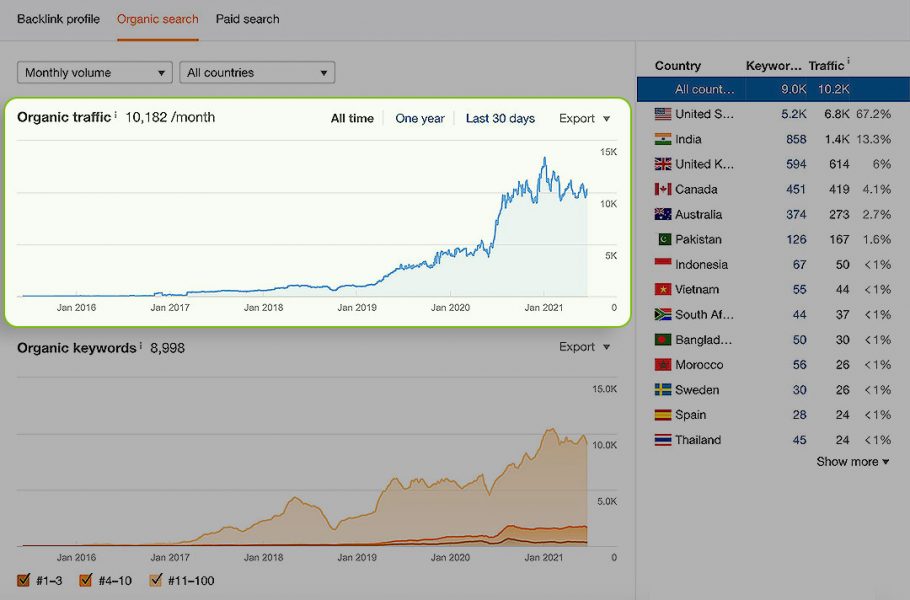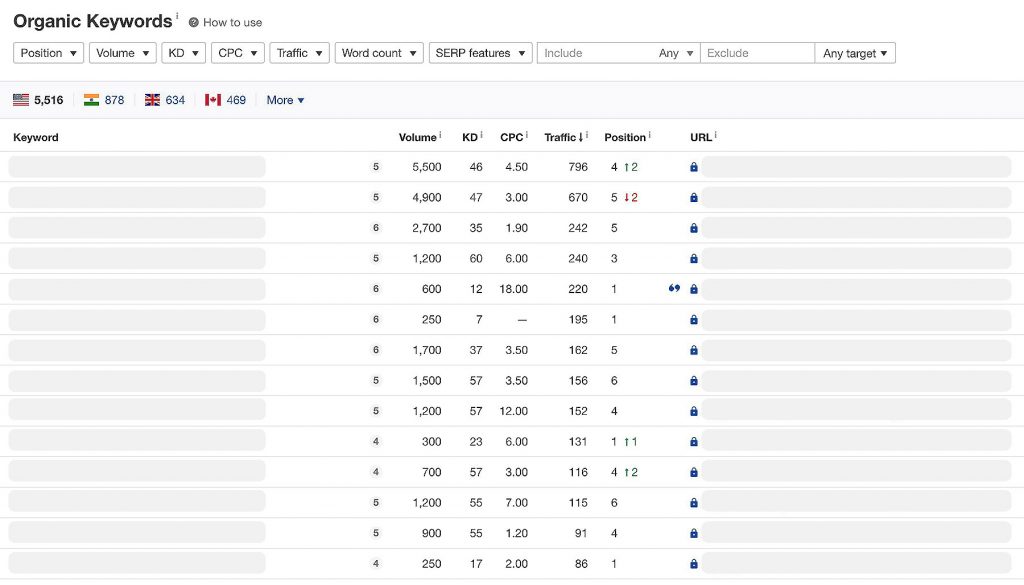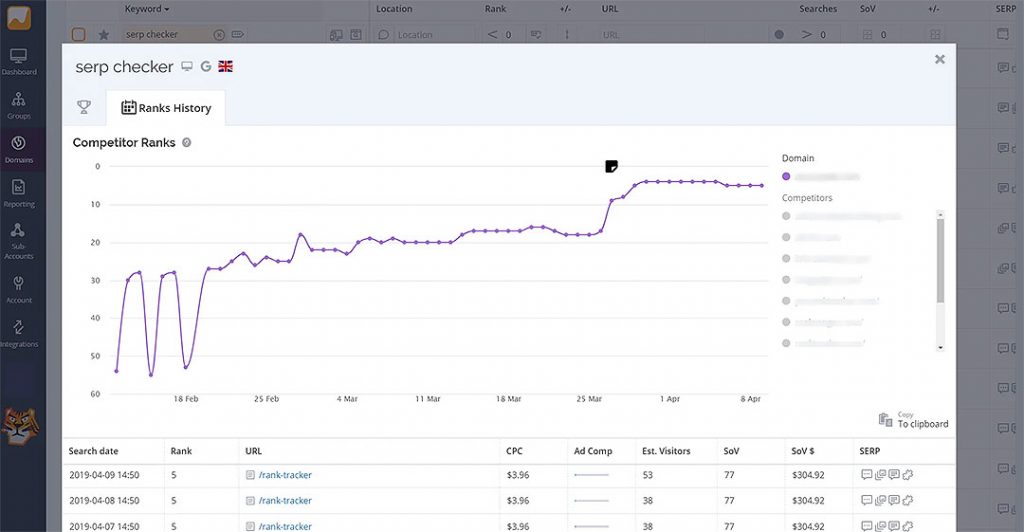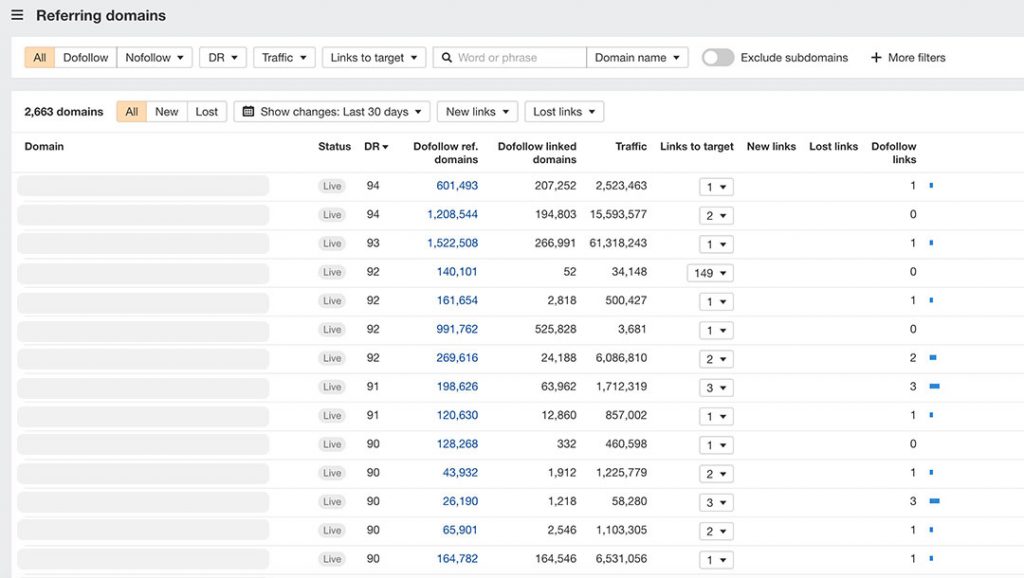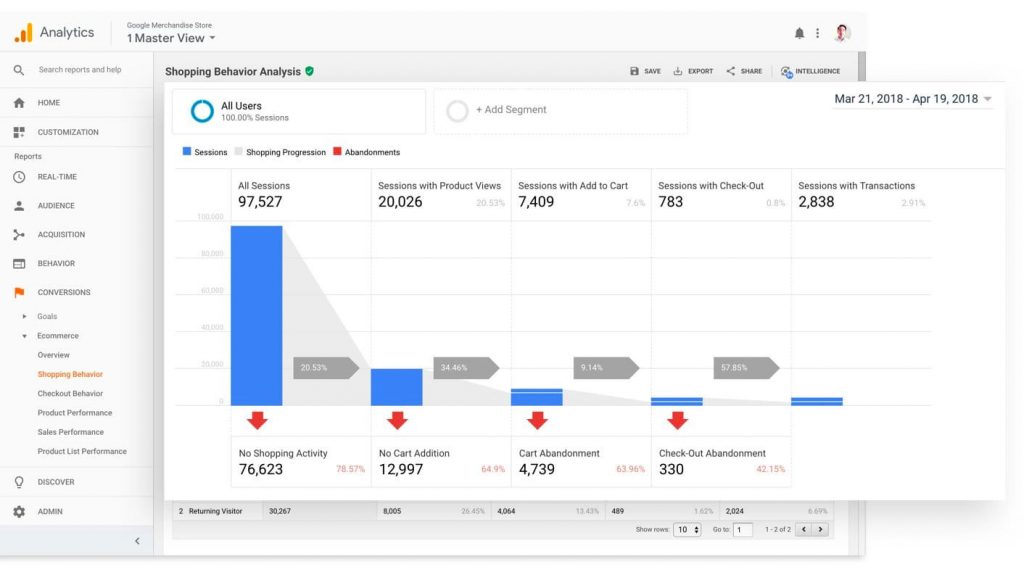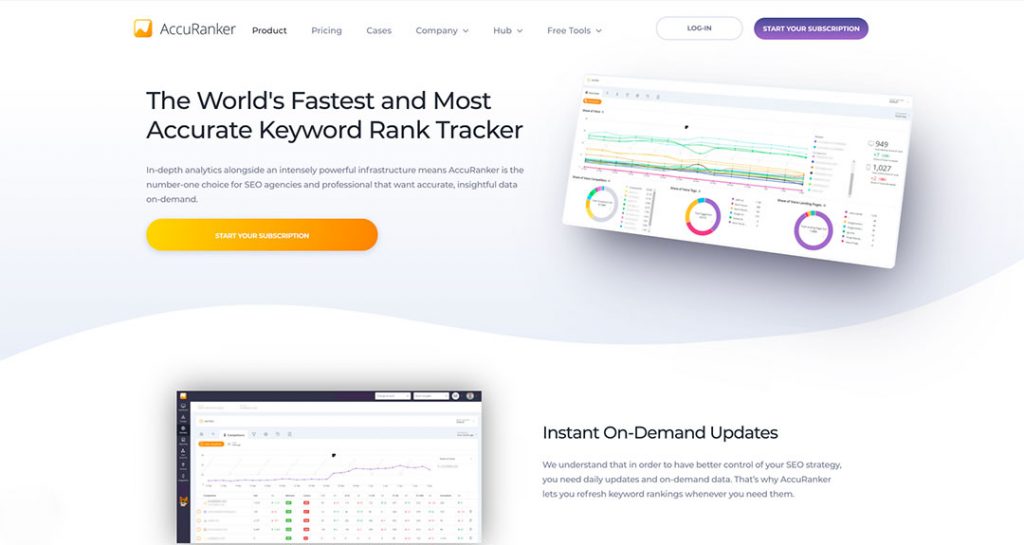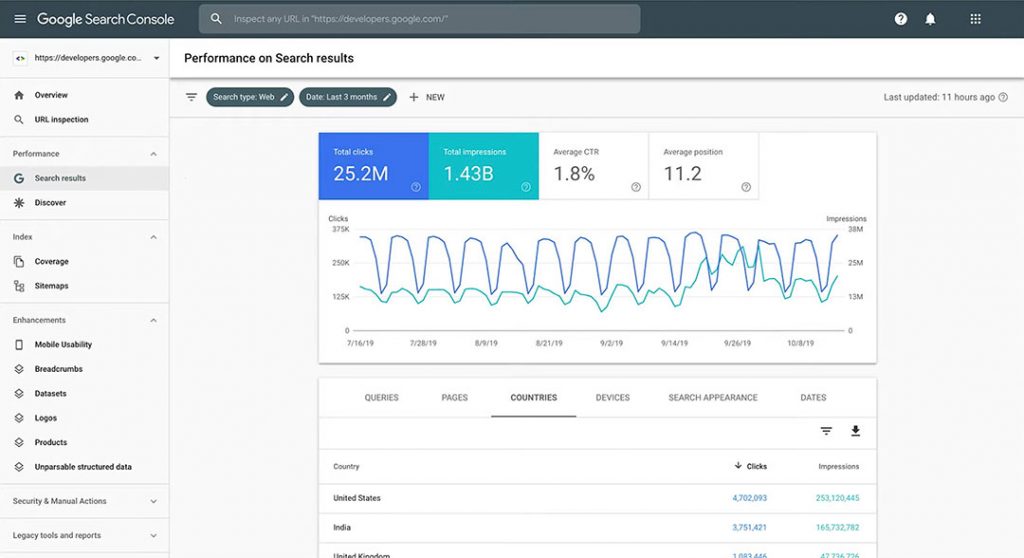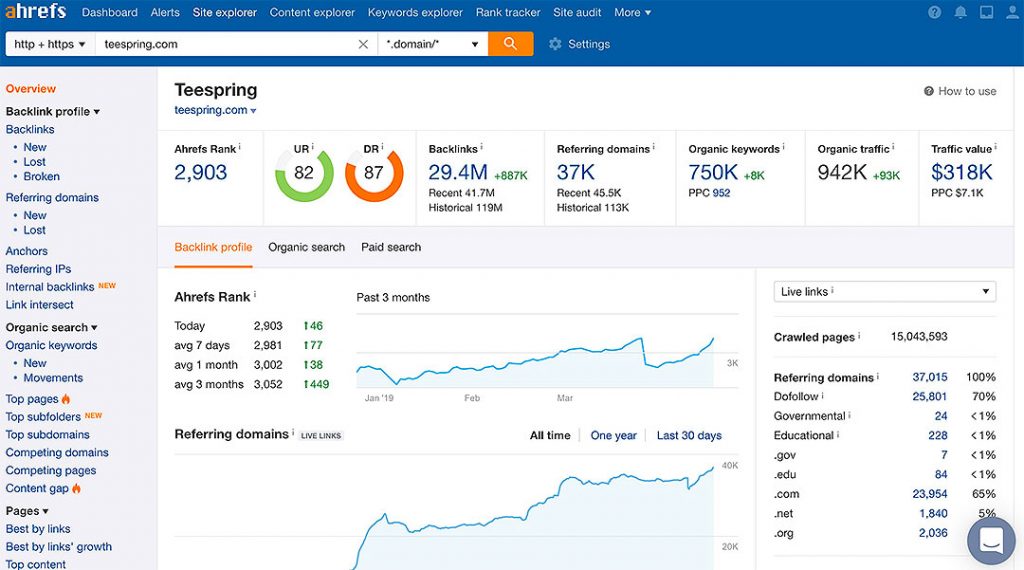Are your SEO strategies truly effective? Without tracking the right SEO KPIs, you’re navigating blind.
I’m Matt Diggity, an SEO veteran since 2009 and founder of multiple successful digital marketing ventures.
I’ve mastered the art of SEO through years of experience and I’m here to share the most important SEO KPIs that are foundational for tracking your company’s SEO effort and the tools to help you do it.
Table Of Contents
- Quick Summary
- 1. ROI from SEO Efforts
- 2. Conversions
- 3. Organic Traffic
- 4. Keyword Rankings
- 5. Conversion Rate from Organic Optimization
- 6. Number of Backlinks
- 7. Amount of New Content Created
- 8. Organic Visibility (Organic Impressions)
- 9. Bounce Rate
- 10. Average Session Duration
- 11. Page Load Time (Core Web Vitals)
- 12. Coverage Issues
- 13. Customer Lifetime Value (CLV)
- 14. Branded vs. Non-Branded Traffic
- 15. Cost Per Acquisition (CPA)
- 16. Click Through Rate (CTR)
- What Are the Benefits of Tracking SEO KPIs?
- What Are the Best Tools for Tracking SEO Performance?
- FAQs
- Choose The Best SEO KPIs For Your Goals
Quick Summary
SEO KPIs are crucial metrics that help assess the effectiveness of your SEO strategies. The most important ones include ROI from SEO efforts, conversions, organic traffic, keyword rankings, number of backlinks, and click-through rate (CTR).
Tracking these KPIs allows you to identify and rectify issues, increase organic sessions, and ultimately improve your bottom line. They provide tangible and raw assessments of your SEO strategy, enabling you to pivot and optimize as needed.
Tools like Google Analytics, Accuranker, Google Search Console, and Ahrefs can be used to track these KPIs effectively. These tools provide valuable data and insights that can help you improve your SEO performance and achieve your business goals.
1. ROI from SEO Efforts
Before diving into the SEO key performance indicators, you should look at the ROI of your current search engine optimization campaign. You should look at the particular SEO actions you are taking and assess what the return for the time and money you have spent is.
For example, if you invest $100 in creating a new blog post and it generates $1,000 in revenue over its lifetime, your investment in content is well-justified. In contrast, if you spend money or time on a different SEO strategy and generate little to no return, your investment is not justified.
Your SEO strategy should have a tangible return, whether it’s more time for you as a business owner or in generating more revenue.
Content creation
Link building
Updating content
Content is the backbone of your SEO campaign. If you are producing high-quality content for your website, the other SEO efforts will pay more dividends.
The effectiveness of your SEO actions like creating content will be tested by other most important SEO KPIs like search visibility and conversions.
2. Conversions
One of the first key SEO metrics that a company should evaluate is conversion. According to Yoast, conversion occurs whenever a visitor to your site performs the desired action.
Examples of a conversion include:
Affiliate clicks
Online sales
Newsletter signups
Submission of contact forms
Click-throughs and more…
Conversion is closely related to other KPIs like conversion rate optimization (CRO), which we will discuss later in this post.
Conversion is one of the best KPIs to assess your SEO ROI because it is tangible, and the results directly impact the bottom line.
Even if you manage to bring in thousands of site visitors per day, you will not make any revenue if you can’t convert them into customers.
Organic conversions lead directly to more money for your business.
Some actionable examples of how you can increase the number of conversions include:
Clear call to actions for each page
Clear above-the-fold headlines and images describing what the site is actually about
Credibility indicators and recognition badges
Media throughout site
Custom logos
3. Organic Traffic
Organic traffic refers to the number of (unpaid) site visitors who come to your website from organic search results. This is different from the overall traffic a page receives from direct URL searches, traffic from social media or paid traffic.
Search traffic is the most straightforward SEO KPI measurements. Since SEO is focused on generating organic search engine visibility and traffic, this is one of the primary KPIs to track a site’s SEO performance. The better the SEO plan, the more organic sessions a site will get.
To analyze how your traffic is performing, you should generally review it over longer periods of time. Comparing your traffic between specific days is not a good performance indicator. Comparing weeks or months are better time frame and can indicate your traffic’s direction.
For example, a major plugin failure or a Google update can cause your search traffic to dip significantly.
Google’s Analytics has extensive analytics on how a site’s traffic is performing. You can analyze exactly which posts bring in the lion’s share of traffic from organic search results and use that data to optimize posts and create similar ones to bring in more search traffic.
4. Keyword Rankings
Many studies have shown that the bulk of search engine users click on a result within the first page.
In fact, there’s a great discrepancy in traffic between the rankings on the first page…
For example, a #1 ranked page will get much more traffic than a #2 ranked page. This is why it is essential to track your page’s ranking for a particular keyword.
Organic traffic alone is unreliable in determining if your SEO strategy is on point for a particular keyword. Some keywords are seasonal in their traffic.
Tracking keyword rankings in organic search results enables you to analyze whether your efforts are working regardless of the traffic you receive.
For example, some keywords may receive little to no traffic throughout most of the year, even if you are in the first position. But this can quickly change over the Christmas period…
By tracking your keyword ranking and ensuring you have the #1 position, you are in the prime spot to bring in significant traffic when searches skyrocket for that particular keyword over Christmas.
You can explore keyword rankings thoroughly in keyword tracking tools like Accuranker.
Keyword tracking tools provide extensive analytics on your keywords’ rankings. These tools allow you to see what’s working in your keyword rankings, track competitors, and much more.
5. Conversion Rate from Organic Optimization
Conversion rate optimization (CRO) entails optimizing your website and landing pages based on user behavior to help achieve desired action (conversion). CRO is different from raw conversions, and it reveals how well many of your page’s elements, like copy, are performing.
If you implement CRO strategies, you can improve that 1% to 3%. Instead of having just 100 customers from the same landing page, your raw conversion number will be 300 customers. CRO enables you to maximize your current traffic to ultimately increase your raw conversion.
Use clear and concise Call To Actions (CTAs)
Adding social proof
Engaging Copy
No huge “walls” of text
A/B testing
6. Number of Backlinks
Backlinks are extremely important in improving the SEO of a website. They are essentially links from another site to your website. Search engines look at referring domains as votes of confidence.
Ahrefs performed numerous studies on backlinks and found that sites with more referring domains typically have more search traffic and higher SEO rankings.
But, not all backlinks are quality links…
“In fact, from years of testing, I’ve found that the authority of the page linking to you matters more than any other factor”.
Brian Dean
Founder of Backlinko
This shows that companies should seek to get links from reputable sites with higher domain authorities.
There are three factors that Google look for in link building:
Relevance: Relevance is how well the linked content relates to the referring page. If you’re writing on a health topic, getting a health-related website to link to you will give your link more relevance. You can improve your relevance by focusing on getting links from sites in your niche.
Trust: Trust refers to the credibility of the site linking back to you. Trust is calculated based on the distance of the linking site to a select list of “seed sites”. The more sites between you and the seed link, the less trustworthy the link is.
Power: Power is the value of the referring domain. This is calculated by how many backlinks that domain gets. If a site with high domain authority (e.g. New York Times) links back to your website, it’s much more impactful than a site with low domain authority.
For more help with building backlinks, I use Authority Builders.
7. Amount of New Content Created
Creating new content is like casting a vast net to catch more search traffic. The more optimized content you have, the wider the net; this ultimately leads to more traffic being generated for your website.
Creating new content alone is insufficient. The content must be high quality and optimized for search engines and better user engagement; the days of publishing small 500-word articles are gone. For best performance on SERP, content must thoroughly address the intent of the keyword it is targeting.
For further assistance with creating optimized content, we recommend using Surfer.
8. Organic Visibility (Organic Impressions)
Organic visibility refers to the number of free impressions your website is getting on search engine results pages. The more organic search search engine visibility you have, the larger the pool of users that can potentially click your website.
Organic search visibility is a prerequisite to getting traffic to your website. It indicates that your website is showing up on Google’s search results.
You’ll need to focus on making sure your website is at the top of the results that your target audience is searching for. This will help turn those impressions into clicks to your website.
Optimizing title
Optimizing metatag
Make your site more mobile-friendly
Increase content output
Improve on-site SEO
9. Bounce Rate
Bounce rate is a percentage between 0-100% that shows the number of visitors that leave after landing on your website.
The higher the bounce rate, the higher the percentage of people that are leaving after landing on your site. A lower bounce rate is indicative of visitors staying on a site and reading the content.
A high bounce rate is not necessarily bad. If the visitor of your website has a high buyer intent, they may spend a short amount of time on a page before finding your contact information. Although the visitor stayed on the page for a short period, the desired outcome was achieved.
For sites that have more informational content, having a higher bounce rate may indicate that the content is not compelling or valuable enough. In that case, a high bounce rate is detrimental.
In the end, bounce rate is subjective based on the specific goals of your website.
Optimizing page load time
Using a singular call to action
Avoid using popups when people first land on your page.
Increase the readability of content
Facilitate easy navigation on pages
10. Average Session Duration
The average session duration measures how long a visitor reads and interacts with your page after they land on it. The average session duration is calculated by taking the total duration of all organic sessions and dividing it by the total number of sessions.
The average session duration shows the time visitors spend on content and other features on your website. Across all industries, the average session duration is anywhere between 1-4 minutes. The average session duration can indicate several insights depending on the goal of your website:
If your site aims to convert traffic into customers, a longer session duration can indicate that readers are not finding what they are looking for
If your site aims to provide helpful information, a longer session duration may indicate that readers are enjoying your content and are engaged
Using these two examples can be a good barometer to see the relationship between average session duration and your website.
11. Page Load Time (Core Web Vitals)
The page load time is the average time it takes for a page to load on a web or mobile device. The page load time for your website is a very important SEO metric for both higher search rankings and user experience.
The slower your site is, the more likely a customer will leave before converting.
“A good first impression isn’t just about design, but also how fast that design loads.”
Tommy Walker
ConversionXL
Page load time is a ranking signal used by Google. The slower a site is, the less likely it is to rank for a particular keyword.
Aim to get your site speed as fast as possible. Once you have optimized your website site, its also a smart idea to continuously monitor your site’s load time.
Page load time provides a quicker feedback loop for you to fix issues before you run into larger problems like traffic plummeting. Your page load time should be ideally below two seconds.
Update from HTTP to HTTPS
Using good hosting
Set up caching for your website
Setting up a CDN
Using newer PHP versions
Optimize images
There are also many other actions you can take to improve your site speed.
12. Coverage Issues
Coverage issues refer to index issues Google has found with your website. In Search Console, there’s an index coverage report that highlights all of the indexing and crawling issues Google found with your site.
This is extremely important for SEO because these issues can hinder your site by not showing your URLs to users when they search for a keyword on Google. The fewer coverage issues a website has, the more visible it will be and found on Google search results.
The feedback for coverage issues is placed into 4 categories by Google: valid, valid with warnings, excluded, and error.
Valid pages are pages that are indexed well.
Valid with warnings are pages that are indexed but have some issues
Excluded: pages that aren’t indexed because Google found reasons not to
Error: pages that are not indexed
The more you can address coverage issues, the more pages on your website will be indexed and search visibility will improve. A website with significant coverage issues will have poor SEO and that impacts all the other KPIs.
13. Customer Lifetime Value (CLV)
When it comes to SEO KPIs, one often overlooked but incredibly valuable metric is the Customer Lifetime Value (CLV). This metric represents the total revenue a business can reasonably expect from a single customer account. It considers a customer’s revenue value and compares that to the company’s predicted customer lifespan. Businesses use this metric to identify significant customer segments that are the most valuable over time.
For instance, if a customer subscribes to your SEO services for an average of 12 months and pays $100 per month, their CLV is $1200. Understanding this figure can help you determine how much you’re willing to spend on acquiring a new customer (Cost Per Acquisition) and still achieve a profitable return on investment.
14. Branded vs. Non-Branded Traffic
Another critical SEO KPI to track is the ratio of branded to non-branded traffic. Branded traffic comes from search queries that include your company or brand name. Non-branded traffic, on the other hand, comes from search queries related to your business offerings but doesn’t include your brand name.
For example, if you run a company called “SEO Magic,” branded queries might be “SEO Magic services” or “SEO Magic reviews.” Non-branded queries could be “best SEO services” or “top SEO companies.”
Monitoring the balance between branded and non-branded traffic can provide valuable insights into your brand awareness efforts. A high volume of branded traffic indicates strong brand recognition, while a rise in non-branded traffic suggests successful SEO strategies for visibility in your industry.
15. Cost Per Acquisition (CPA)
Cost Per Acquisition (CPA) is a vital financial metric for any business. It measures how much your business spends to acquire a new customer. This includes the cost of marketing efforts, operational expenses, and any other costs associated with attracting new customers.
For instance, if you spent $1000 on an SEO campaign that resulted in 10 new customers, your CPA would be $100. Keeping a close eye on your CPA helps ensure that your investment in customer acquisition is yielding a profitable return. Remember, a lower CPA is usually better, but it’s essential to balance this with the quality of customers you’re attracting.
16. Click Through Rate (CTR)
Click Through Rate (CTR) is a percentage that shows how often people who see your website or ad end up clicking on it. This metric is crucial for understanding how well your keywords and ads are performing.
For example, if your ad appears 100 times (impressions) and 5 people click on it, your CTR is 5%. A high CTR means that a higher percentage of people who see your ad click on it, indicating that your ad is attractive and relevant to viewers.
Remember, a high CTR is a good indication of an effective SEO strategy, but it’s not the end goal. The ultimate goal is conversion – turning those clicks into customers. So, while CTR is a valuable KPI for your SEO efforts, it should always be considered in the context of your overall business objectives.
What Are the Benefits of Tracking SEO KPIs?
Tracking SEO KPIs enables your company to get a tangible and raw assessment of your SEO strategy. This in turn allows you to pivot, identify and fix issues, increase organic sessions, and ultimately improve your bottom line.
For example, some of the aforementioned KPIs and their associated benefits include:
New content creation: allows you to rank for more search queries, and increase organic sessions
Number of backlinks: increased domain authority which will, in turn, improve search rankings for target keywords
Conversion: more sales, click-throughs and sign ups
Organic traffic: bring more targeted visitors to your content and the opportunity to turn visitors into paying customers
What Are the Best Tools for Tracking SEO Performance?
Some of the best tools for tracking performance of your SEO campaign include:
Google Analytics
Accuranker
Google Search Console
Ahrefs
Google Analytics
GA is one of the best SEO tools for tracking organic conversions, traffic and onsite KPIs.
For example, under Conversions on Analytics, you can track your conversion goals, ecommerce conversions, and multi-channel funnels. Under each of those specific tabs, there are dozens of different analytics and data points.
This allows you to test anything on your website and see how it impacts specific data like conversion rates.
The great thing about GA is that it’s free. You can pay for premium services, but all of the fundamental analytics for your site are at your fingertips 24/7 for free.
For most website owners, Analytics is generally the first place they explore all aspects related to their website.
Accuranker (Rank Tracking)
Accuranker is one of the fastest and most accurate keyword rank trackers out there. With Accuranker, you get instant on-demand updates, SERP history, in-depth analysis, and more. It’s one of the most cost-effective rank tracking solutions in the market today.
With Accuranker, you can get:
Unlimited domains
Unlimited users
Tagging and landing page features
In-depth analysis from precise data sets and more.
It’s the best rank tracking tool on the market and we’ve used it for our own rank tracking. Get a free 2 week trial with our link here.
Google Search Console
GSC is the best tool for organic visibility and is essential for addressing coverage issues. Other SEO tools do not have the same capacity to track and provide reports on your site.
Organic visibility and coverage are closely tied. The fewer coverage issues you have, the more organic visibility your site will have. GSC provides all this information to you for free. Adding GSC to your SEO toolbox is mandatory to help you increase the search engine traffic to your website.
Ahrefs
Ahrefs serve a variety of functions that include keyword research, competitor research, site analysis, rank tracking, and more.
Ahrefs is an excellent SEO tool to discover new links to your site. It’s not a necessity for backlink tracking (we do it manually using Google Sheets) but it’s a good tool to find link opportunities and track your competitors’ SEO efforts.
With Ahrefs, you can check the domain authority for sites before requesting backlinks. This is helpful in determining which sites are worth getting links from to improve the domain authority of your own website.
FAQs
What Is the KPI for SEO?
The Key Performance Indicators (KPIs) for SEO are metrics used to evaluate the effectiveness of an SEO campaign. These include organic traffic, keyword rankings, backlinks, bounce rate, conversion rate, page load time, and customer lifetime value, among others.
How Is SEO Measured?
SEO is measured using various metrics and tools. These include tracking changes in search rankings, organic traffic, and conversion rates. Tools like Google Analytics, Google Search Console, and Ahrefs can provide valuable data for measuring SEO performance.
How Do I Know My SEO Is Good?
You can know your SEO is good by high organic traffic, improved search rankings for targeted keywords, increased backlinks from reputable sites, low bounce rate, and high conversion rates. Regular monitoring and analysis of these important SEO metrics can help assess the effectiveness of your SEO strategies.
Choose The Best SEO KPIs For Your Goals
It’s important to narrow your focus and put emphasis on a few KPIs that are relevant to your business needs. Focusing on the wrong SEO KPI will just result in doing busy work and not actually growing your business.
The KPIs covered in this blog are the most important metrics you can use to drive search engine traffic to your content.
Start by focusing on one SEO KPI and see how improving that grows your business.
Digesting and implementing this entire glossary of SEO jargon will take time. But, if you want someone to take care of your SEO for you, book a consult with The Search Initiative here.



 Affiliate clicks
Affiliate clicks